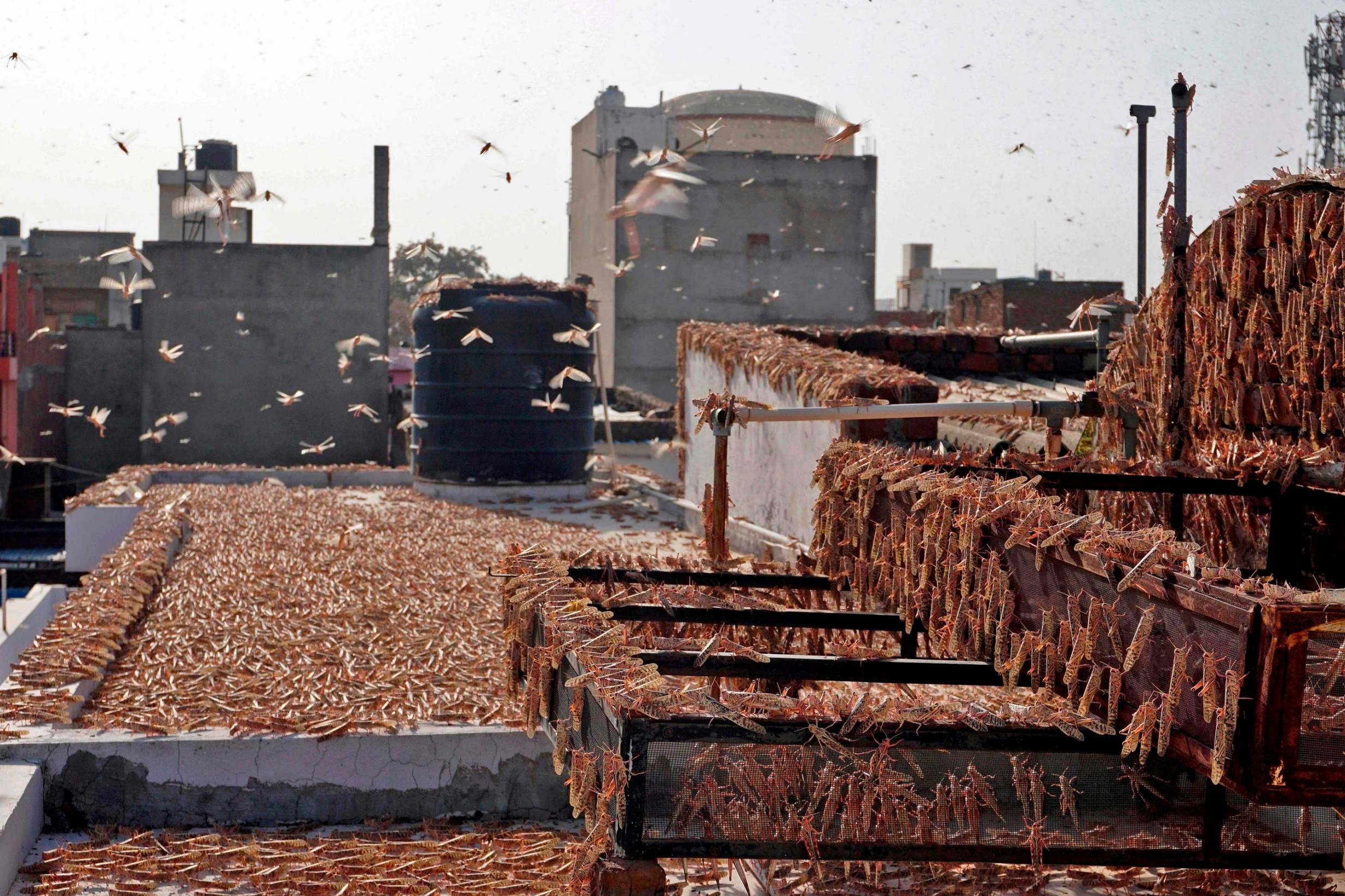‘Overtaken by aliens’: India facing worst locust attack in 25 years
Scientists say voracious bugs are faster than in previous infestations
Your support helps us to tell the story
From reproductive rights to climate change to Big Tech, The Independent is on the ground when the story is developing. Whether it's investigating the financials of Elon Musk's pro-Trump PAC or producing our latest documentary, 'The A Word', which shines a light on the American women fighting for reproductive rights, we know how important it is to parse out the facts from the messaging.
At such a critical moment in US history, we need reporters on the ground. Your donation allows us to keep sending journalists to speak to both sides of the story.
The Independent is trusted by Americans across the entire political spectrum. And unlike many other quality news outlets, we choose not to lock Americans out of our reporting and analysis with paywalls. We believe quality journalism should be available to everyone, paid for by those who can afford it.
Your support makes all the difference.Magan Doodi, a groundskeeper at a golf course in Jaipur, was making his rounds earlier this week when he saw the sky suddenly turn a weird pink.
It wasn’t some quirk of the weather. It was locusts – millions of them, “like a spreading bedsheet”, he said.
“The locusts have attacked the golf course!” Mr Doodi yelled down the phone during the battle on Monday morning. “It’s man versus locusts!”
As if India needed more challenges, with coronavirus infections steadily increasing, a heatwave hitting the capital, and 100 million people out of work, the country now has to fight off a new problem: a locust invasion.
Scientists say it is the worst attack in 25 years and that these locusts are different.
“This time the attack is by very young locusts who fly for longer distances, at faster speeds, unlike adults in the past who were sluggish and not so fast,” said K L Gurjar, the deputy director of India’s Locust Warning Organisation.
The locusts poured in from the east, from Iran and Pakistan, blanketing half a dozen states in western and central India. Because most of the crops were recently harvested, the hungry swarms have buzzed into urban areas, eager to devour bushes and trees, carpeting whatever surface they land on.
On Monday, Jaipur, a sprawling city of 4 million and the biggest in the state of Rajasthan, was besieged. A blizzard of bugs flew over concrete buildings and the wealthier neighbourhoods, swooping in on trees and plants, crossing graveyards and jewellery markets, attracted to the manicured golf course in the heart of the city.

After he saw what was happening, Mr Doodi, the groundskeeper, yelled out to the caddies and other key personnel, urging them to make whatever loud noise they could to drive the bugs away. Some grabbed firecrackers. Others steel plates to bang on. Another person ran up to the roof of a maintenance building and started thumping on empty plastic containers, like drums.
Residents clamoured to protect themselves and their flora, spilling onto the streets banging plates with spoons and jumping into parked cars to honk horns.
“I got out of my room and came out on my terrace at around 10am and saw a long shadow on the ground,” recalled Nikhil Misra, a lawyer in Jaipur. “I just stood still. It was something I had never seen in my lifetime.”
“I looked up and saw a cloud, not the cloud that gives you rainfall, but a cloud of locusts, thousands and thousands of them hovering over my head,” he said. “It was a silent attack. It was a strange kind of fear, as if being overtaken by aliens.”
Scientists say that this outbreak, though separate from recent outbreaks in east Africa, is driven by the same factors: unusually warm weather and more rain. They blame climate change.
“All this started in late 2019, when there were warm waters in the western Indian oceans,” said Roxy Mathew Koll, a climate scientist at the Indian Institute of Tropical Meteorology in Pune. “These waters triggered lot of rains over the east African regions and the Arabian Peninsula. This seems to have triggered an ideal condition for breeding of locusts.”
The movement of the swarms depends on the winds, which are blowing west to east and a little south right now. That could put the swarms in India’s bushy centre very soon.
Already, they have overrun one of India’s renowned tiger reserves, Panna National Park, covering the trees in straight lines of countless insects, like a twitching bark.
The Indian government wants to tackle this regionally and has offered to set aside some of its differences with Pakistan to provide the neighbouring country with pesticide to spray on its side of the border. India has made the same offer to Iran, which responded positively, Indian officials said.
Indian scientists said that in a single day, a modest locust swarm can travel 125 miles, and eat as much food as about 35,000 people.
The New York Times

Join our commenting forum
Join thought-provoking conversations, follow other Independent readers and see their replies
Comments